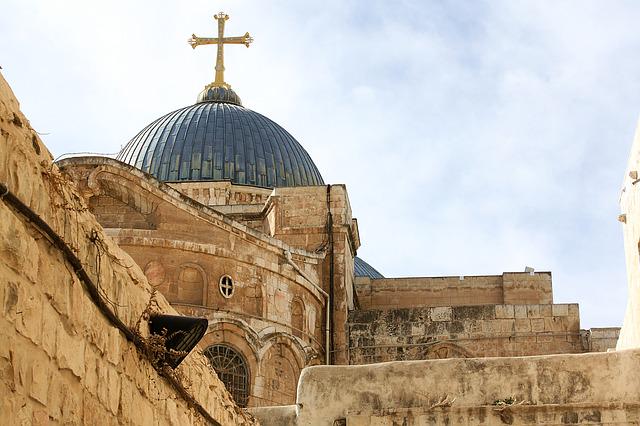On Wednesday, Israeli researchers and Greek workers working in the Church of the Holy Sepulchre in Jerusalem believe that the large rock lying in a corner of the church may be a part of a 12th Century altar once used in the area.
The rock, also known as the 'graffiti stone', is believed to date back to the 12th century ad is currently being studied while the Edicule/Aedicule is being restored. The Edicule or Aedicule is the site that protects the tomb of Christ and it is located inside the church itself.
According to the report of the Smithsonian magazine, the head of the renovation for the church Amit Re'em of the Israeli Antiquities Authority was the one who noticed intricate circles in the limestone and traces of marble and porphyry, a type of red stone used in the area in ancient times.
Upon his discover, Re'em compared the markings and the materials with those recorded in a Jerusalem library and also sought the assistance of historian Ilya Berkovich of the Ludwig Maximillian University in Munich. The magazine wrote that Re'em 'tracked the geometric pattern on the stone's design to a style popular in Rome in the 12th century. The use of four circles surrounding a central circle, all richly inlaid, was the trademark design of the Cosmati family, Roman artisans who worked for the pope.'
Re'em believes that the altar was formerly used for masses in the church until a fire struck the church in 1808 and the piece was then buried under a new floor and forgotten. He also said, 'I think that this exquisite piece of art could be evidence for the papal artistic patronages in the church. It is proof that Crusader art was highly developed.'
The magazine also reported that the nave and main altar east of the Edicule had being excavated in 1969 and while the results were not publicly published, a Catholic priest shared that the team found Crusader-era pieces.
'Some were covered up, but others, including the rectangular panel examined by Re'em, were removed so that the researchers could access material from the earlier Byzantine era.'
Currently, the Edicule is open for Catholic, Greek Orthodox, Armenian Orthodox and others. However, relations between these groups remains tense despite sharing the holy site.








